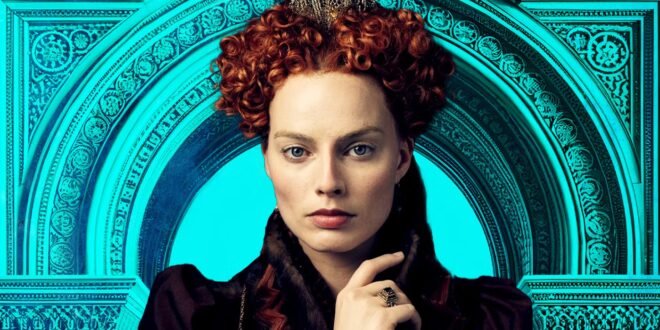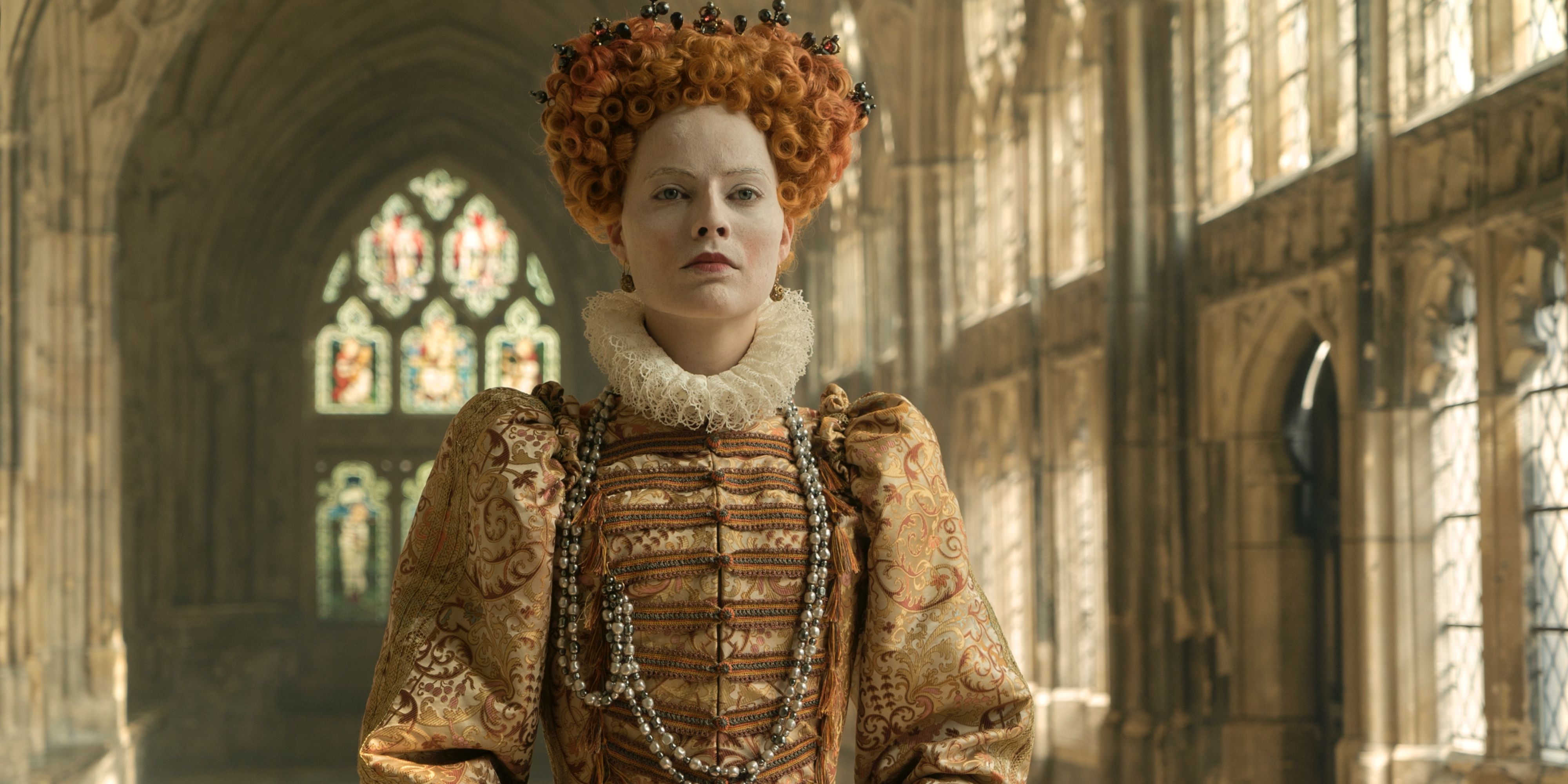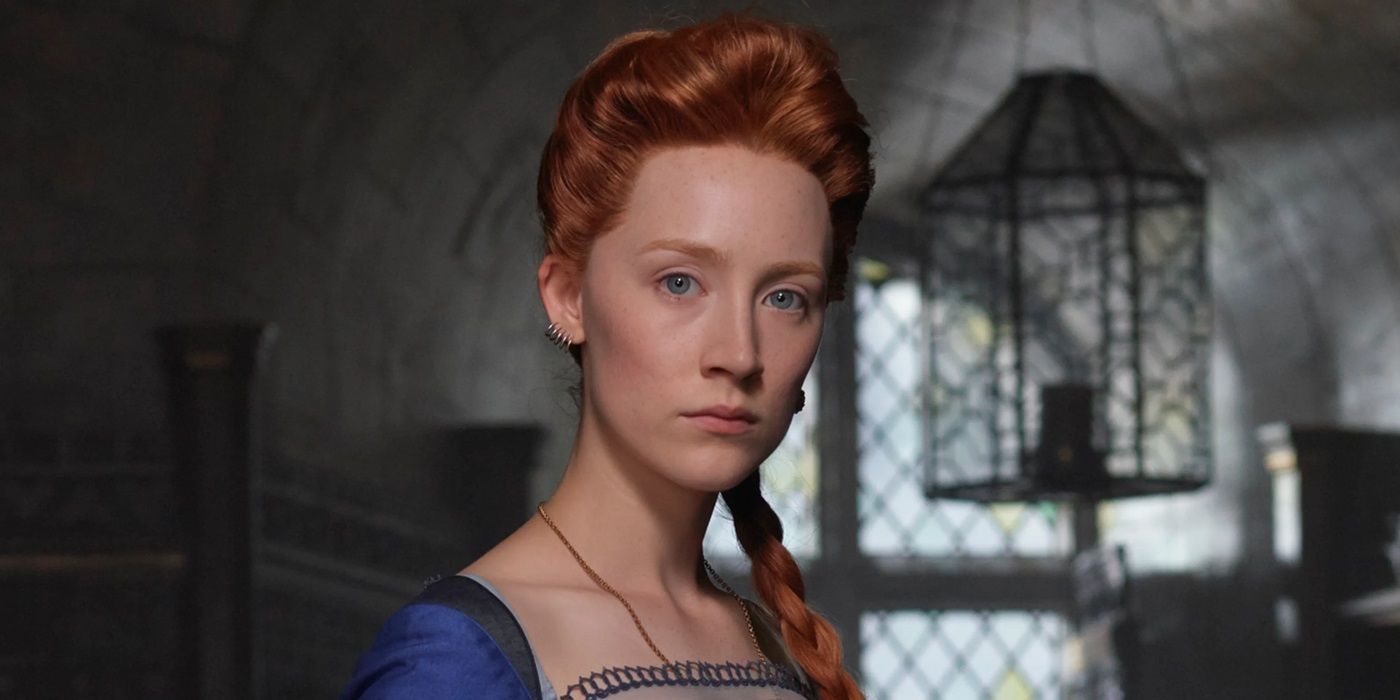It is always a huge responsibility to portray a historical figure, particularly when legendary actors have already played that figure. This was the situation Margot Robbie found herself in when she was cast as Queen Elizabeth I in Josie Rourke‘s Mary Queen of Scots (2018) across from Saoirse Ronan and a supporting cast that included Jack Lowden, David Tennant, and Joe Alwyn. However, Robbie had nothing to fear regarding the stakes of portraying the queen, as she found a unique angle to Elizabeth in leaning into her personal insecurities and vulnerabilities. Elizabeth stands out as one of Robbie’s most singular and captivating roles, and truly shows her shape-shifting abilities, especially given the projects Mary Queen of Scots came between.
What Is ‘Mary Queen of Scots’ About?
Mary Queen of Scots tells the intertwining story of Protestant monarch Elizabeth I and her Catholic cousin Mary Tudor (Ronan), who returns to Scotland to take over the throne at age 18 following the death of her husband, the king of France. As Mary faces threats to her power from a Reformed Scotland led by John Knox (Tennant), many still see her as the rightful queen of England and endorse her as Elizabeth’s heir. Rourke had a lot of complicated political history to wade through, but still managed to humanize both queens and give them detailed personal lives, including their romantic trials and tribulations. It is partially an epistolary story, told through the letters exchanged between the two queens, which was essentially their only mode of communication with each other. Rourke does take significant artistic license, veering away from fact to convey a more emotionally compelling story, but Mary Queen of Scots is still grounded in historical truth. As the film progresses, Elizabeth and Mary go from sympathetic allies as fellow women rulers to eventual rivals.
Margot Robbie and Josie Rourke Wanted to Show a More Vulnerable Side of Elizabeth I
There have been many different portrayals of Queen Elizabeth I through the years, including performances by Helen Mirren, Judi Dench, and Cate Blanchett. In a profile with Porter, Robbie said that given the screen legacy the character already had, she was nervous to take on the role of the famous queen. Robbie reported that before taking the part, she asked herself, “Who am I to think that I could join that legacy? So initially I thought, ‘No chance, no way.’ I didn’t think I could pull it off.” However, Robbie and Rourke did pull it off, and they did so by focusing on the vulnerability behind this brilliant tactical leader.
Robbie found a way into her character by imagining Elizabeth’s insecurities, which came from knowing certain real details about her life. For one, Elizabeth suffered from a nearly deadly case of smallpox when she was 29, which led to severe facial scarring. To cover the scars, she used a thick white makeup called Venetian Ceruse, which itself was toxic, causing lead poisoning and hair loss. This in turn necessitated even more dramatic makeup and wigs. In an interview with Deadline, Robbie explained that when she first got into the post-smallpox makeup, it “definitely looked painful. People looked away a little bit, like it was uncomfortable to look at Elizabeth, which is great, because it was a small glimpse of how she might have felt at the time.” In this older, more theatrical version of Elizabeth, Robbie carries her head high as she has to, but there is a quality of restraint in her expressions, as if Elizabeth is desperately trying to cover up self-consciousness.
In addition to her physical appearance, another facet of Elizabeth’s life that Robbie used in her portrayal was the very real danger to her life that she dealt with on a daily basis, from fear of foreign invasion to the more intimate fear of assassination, which resulted in paranoia as she got older. At the end of the film, Elizabeth eventually imprisons and executes Mary based on evidence of an assassination plot. Throughout the film, Robbie portrays the harsh ways Elizabeth hid her vulnerabilities behind her persona as an impartial monarch.
Elizabeth and Mary’s Complex Relationship Is the Best Part of ‘Mary Queen of Scots’
Robbie’s performance stands out in the way she depicts Elizabeth’s jealousy of Ronan’s wilder, more defiant Mary. Mary is outspoken about her choices, choosing husbands for love rather than political goals and remaining a devout Catholic despite the danger. In contrast, Elizabeth makes extremely calculated decisions throughout her career, even at one point sending her lover and favourite, Robert Dudley (Alwyn) to Scotland as a suitor to Mary, a political move that requires personal sacrifice. In the same interview with Deadline, Ronan explained that the two actors intentionally did not see each other in character until they filmed the pivotal scene where the two queens meet each other in person. Because of this choice to limit actual physical exposure to each other on set, much of Robbie’s character work involved imagining what Mary was up to and living vicariously through her. She stated to Deadline, “My character doesn’t have scenes where she can giggle and have fun.” Whereas Mary is often joyful, laughing with her handmaidens and living freely as herself, Elizabeth often appears visually pained with loneliness and envy.
Mary Queen of Scots is about two very different types of monarchs and the struggles they face as men constantly attempt to gain influence over them through marriage and the pressure to produce a male heir. What is so interesting about this film is that neither queen is villainized. It is a complicated portrait of individual lives. This role proved Robbie’s versatility, coming after a completely different performance in I, Tonya and preceding her role as Sharon Tate in Once Upon a Time in Hollywood, and it also earned her a BAFTA nomination for Best Actress in a Supporting Role.
Mary Queen of Scots is currently available to rent or buy on Apple TV+ in the U.S.
Source link



